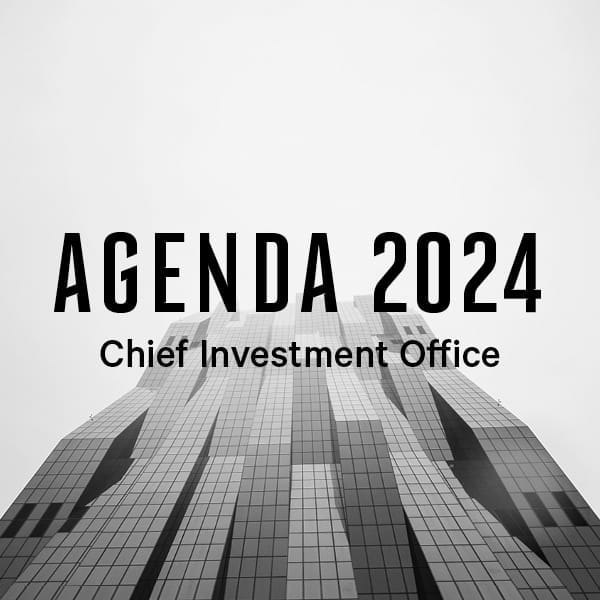-
Emerging from the Crisis

The uncertainty of the US election has now faded; the narrative around an effective vaccine has turned more positive allowing thoughts to turn to re-opening strategies; and fiscal and monetary policy are still very supportive. The stars are aligned for a strong, synchronised, cyclical rebound in the global economy next year.
We believe emerging markets offer attractive risk-adjusted returns in this environment, particularly those that sit in the Asia region.
-
Synchronised recoveries are rare

Synchronised growth recoveries are not only rare they are particularly supportive for emerging markets.
Synchronous growth creates a positive feedback loop for emerging economies. With developed markets accounting for 60% of emerging-market exports, as import growth accelerates in the former, exports rise in the latter boosting income which in turn supports domestic consumption.
The last time we experienced a synchronised global recovery was in 2009. Stimulus following the Global Financial Crisis (GFC) boosted domestic demand in the major economies and created a boom in global trade.
From the bottom in March 2009, the MSCI Emerging Markets Index rose 153% over a two-year period. This easily exceeded the MSCI World Index which rose 97% over the same period.
We expect this outperformance to once again be the case for three reasons.
First, another US fiscal stimulus package (the fourth) is expected to be released in early 2021. That, combined with considerable pent-up demand in the form of savings rates that are double normal levels, will boost US consumption activity. The availability of multiple vaccines will help unleash this pent-up demand and accelerate a return to normal for U.S. consumers.
As the chart below shows, emerging market growth tends to follow US consumer activity closely via the trade link.
Chart 1: Emerging market growth follows the US consumer

Source: Bloomberg
Second, Joe Biden is President-elect. His victory is seen as positive for emerging markets. With Biden there is the promise of a return to a rule-based world, which means fundamentals may start to reassert. It could also mean the U.S. will be more considered in its dealings with the EU and NAFTA, and become less hostile toward China.
Third, a subsidence of trade tensions and a recovery in global growth may lead to a weaker US dollar. A weaker US dollar has traditionally been positive for emerging markets given the fact that large amounts of their debt is denominated in US dollars. Weaker emerging market currencies push up debt/GDP ratios and reduce borrowers’ ability to pay US dollar debt. That’s especially dangerous for fragile, high-inflation economies like Argentina and Turkey.
-
Why Asian emerging markets?

The global recovery after the GFC was led by the emerging markets known as the BRIC economies – Brazil, Russia, India and China. This time around, we believe it will be the TICK economies that lead us out – Taiwan, India, China and Korea. These economies will likely benefit the most from a global re-opening next year having greater economic, financial and political stability than their peers.
In the scorecard below, we measure economic stability by comparing economic growth expectations for 2021. We measure financial stability by looking at the fiscal and current account balances of each economy and we proxy political stability by looking at the performance of the respective currencies over the past 12 months.
What is notable is the number of Asia economies at the top of the table.
China and Taiwan both rate highly with balance-sheet strength, solid economic fundamentals and political stability. South Korea is next, reflecting a productive and innovative economy, a stable political climate and a robust balance sheet.
India scores well on the basis of its growth outlook but a deterioration in its fiscal balance due to sizeable COVID-stimulus weights on its overall score.
Chart 2: Emerging market scorecard

Source: Bloomberg, Escala
Turkey, Brazil and South Africa are at the bottom of the ladder driven largely by poor institutional robustness, an unstable political structure, and weak balance sheets.
The Turkish lira has been the worst performing emerging market currency this year as foreign capital has flowed out of the economy in response to poor macroeconomic management and political instability. The Turkish Government has attempted to support the currency by spending some of its foreign exchange reserves.
Foreign exchange can act as a cushion for those emerging markets that rely of foreign capital inflows to drive growth. It can be used by governments as back-up funds in the event of foreign capital flight. Such was the case during the Asian
Financial Crisis in 1997. Since then, most Asian economies maintain large foreign exchange reserves as part of their risk management strategy.
Taiwan
Taiwan in known for its manufacture of semiconductors and is home to Taiwan Semiconductor Manufacturing Company (TSMC), the world’s largest manufacturer of semiconductors. Tailwinds present before COVID, fuelled by the transition to 5G, data centre expansion, and high-powered computing, have become gale force post-COVID.
From a macroeconomic standpoint, Taiwan is well positioned. Taiwan’s September quarter GDP report came in stronger than expected with a significant rebound in domestic consumption. This was supported by stabilizing consumer sentiment upon successful COVID-19 containment, an improving labour market and government measures to boost consumer spending and domestic tourism. Taiwan’s industrial production topped expectations in September, led by broad-based gains across machinery and equipment, base metals, and chemical material production. The total value of factory output reached an all-time high.
Consistent with this, Taiwan’s export orders are booming with August data registering the highest increase since January 2018. Orders from the U.S., China and Europe all recorded double-digit growth.
India
India’s daily COVID case numbers peaked in the middle of September and have since been on a downward trajectory. Coordination between the central and state governments on COVID, and fairly successful policy responses in areas such as contact tracing and production of protective clothing for medical staff, suggest India has the technical capability to lift lockdowns and keep them lifted in large areas where the pandemic is not especially severe.
India’s COVID stimulus of INR20 trillion (about 10% of GDP) was large and highly targeted with liquidity injections, cash transfers to migrant workers and loans to small business. This has been followed by reforms such as expanding the small firms umbrella and a suspension of duties and taxes on exports to offset infrastructure inefficiencies.
India’s industrial production growth turned positive in September for the first time in seven months, aided by the further easing of lockdown measures and low inventory levels.
The government has announced fresh policy measures to support the economy – largely focused on the manufacturing sector. Together with previous structural reforms, the new policy measures should encourage increased investment in the manufacturing sector and point to a sustainable recovery over the medium-term.
China
China’ exports are surging, so much so that freight congestion is building. China Railway Express reported for the ten months to October cargo volume from China to Europe jumped 50% from a year ago. More than 10,000 freight trains have made the China-to-Europe run, an 80% increase from a year earlier. Capacity is now running above 98%.
Overall, Chinese exports are growing at the fastest pace since March 2019. Exports to major trading partners, including the United States, the European Union and the rest of Asia, all grew strongly. Meanwhile shipments of medical goods and electronic goods continue to power the Chinese economy.
Despite the escalating trade tensions, Chinese exports to Australia rose 16.6% from a year earlier, while imports from Australia rose 6.6%.
Chart 3: Chinese exports (yoy%)

Source: Bloomberg
Chinese consumer demand now appears to have recovered from the hit it took during the pandemic. This is reflected in the strength in imports from its major trading partners. Imports from Germany are growing at their fastest pace since April 2018 while imports from the US are the highest since February 2017.
Chart 4: Chinese import partners (yoy%)

Source: Bloomberg
Reflecting the strength in the Chinese economy, commodity prices are rising. Iron ore prices are up 31% year-to-date for example.
Geopolitical risks are a more potent headwind for China. Regulatory and legislative actions aimed at China’s internet companies in the U.S. and India remain.
Korea
Being one of just a handful of countries that managed to escape the coronavirus carnage, South Korea is heading into next year in better shape than most. A strong public health response and aggressive stimulus have helped limit the economic damage from the crisis.
The rebound in 3Q GDP was driven by a 15.6% quarterly surge in exports as the easing of global lockdowns helped to release pent-up demand. The data so far suggest the recovery in external demand is continuing into the fourth quarter, led by sustained strength in semiconductor shipments – underscoring the importance of the tech sector in driving the rebound in the Asia region. The broadening recovery in China to include consumption – the destination of about a quarter of South Korea’s overseas sales – should also lend continued support to exports.
South Korea’s makers of electric-car batteries, solar panels, wind power plants and hydrogen fuel-cell vehicles will also likely benefit from having Joe Biden in the White House given his $2 trillion green plan.
-
Regional trade boost

Following the recent signing of the worlds’ largest trade deal, the Regional Comprehensive Economic Partnership (RCEP), we expect to see the rise of regional economic centres, where supply-chains get re-distributed and growing demand from large economies like China or India fuels growth in other developing countries nearby.
Supply-chains have been significantly disrupted already over the past couple of years. Two years ago, for example, 80% of Christmas tree lights sold in the US came from China. In the first 10 months of 2020, just 25% came from China as the trade war took effect. Vietnam was a beneficiary taking up a 44% share this year while the Philippines took 16%.
Put this together with strong domestic consumption driven by a rising middle class and the tilt towards growth industries, and we can see a compelling case for exposure to Asian emerging market economies.
-
The importance of being active

While the case for emerging markets for investors seeking growth and diversification is strong currently, being discerning is critical. Passive funds that track industry benchmarks contain a significant amount of unrewarded risk.
The recent crisis highlights the importance of investing in high-quality names, that are located in countries with sound balance sheets, and stable political and economic structures.
Active management and an awareness corporate governance is paramount to guarding against fraud, false information disclosure, malicious transfer of assets, misappropriation of funds and other illegal activities that tend to be more evident in emerging markets than in other jurisdictions.













